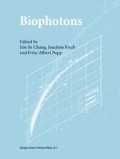Abstract
Life and environment are in a constant interaction, and temperature plays in this a crucial role. It affects the rate of all cellular reactions and it determines the survival of the organisms. Notoriously sensitive to temperature is mammalian cell survival which is mainly limited to a narrow range of temperatures, from a few degrees to approximately 40°C. Cells differ in the range of temperatures that they can tolerate. This may change in time as a certain degree of adaptation is possible. It has been known that exposure to a sub-lethal temperature often leads to adaptations so that previously lethal temperatures are now tolerated. This response to heat shock has attracted considerable attention from molecular biologists over the last decade, which has resulted in a rapid accumulation of data providing considerable insights not only into the molecular basis of thermotolerance, but also into stress physiology in general. The heat shock response is now known to occur from bacteria to man (Schlesinger et al. 1982). It is accompanied by a transient reprogramming of cellular activities to ensure the cell’s survival by stimulating defence mechanisms and by protecting essential cell components against the heat damage.
Access this chapter
Tax calculation will be finalised at checkout
Purchases are for personal use only
Preview
Unable to display preview. Download preview PDF.
References
Chalfie M., Tu Y., Euskirchen G., Ward W.W. and Prasher D.C. (1994). Green fluorescent protein as a marker for gene expression. Science 263: 802–805.
De Wet J.R., Wood K., DeLuca M., Helsinki D.R. and Subramani S. (1987). Firefly luciferase gene: structure and expression in mammalian cells. Mol Cell Bio1 7: 725–737.
Gorman C.M., Moffat L.F. and Howard B. (1982). Recombinant genomes which express chloramphenicol acetyl transferase in mammalian cells. MOl.Cell.Bi01. 2: 1044–1051.
Gould S.J. and Subramani S. (1988). Firefly luciferase as a tool in molecular and cell biology. Anal.Biochem. 175: 5–13.
Hescheler J., Meyer R., Plant S., Krautwurst D., Rosenthal W. and Schulz G. (1991). Morphological, biochemical, and electrophysiological characterization of a clonal cell (H9c2) line from rat heart. Circ.Res. 69: 1476–1486.
Hunt C.R. and Morimoto R.I. (1985). Conserved features of eukaryotic hsp70 genes revealed by comparison with the nucleotide sequence of human hsp70. Proc.Natl.Acad.Sci. U.S.A. 82: 6455–6459.
Kimes B.W. and Brandt B.L. (1976). Properties of a clonal muscle cell line from rat heart. Exp.Cell Res. 98: 367–381.
Li G.C., Li L., Liu Y.K., Mak J.Y., Chen L. and Lee W.M.F. (1991). Thermal response of rat fibroblasts stably transfected with the human 70-kDa heat shock protein-encoding gene. Proc.Natl.Acad.Sci. U.S.A. 88 (5): 1681–1685.
Lindquist S. (1993). Autoregulation of the Heat-Shock Response. In: Translational regulation of gene expression 2, edited by Ilan J. Plenum Press, New York. pp. 279–320.
Meighen E.A. (1991). Molecular biology of bacterial luminescense. Microbiol.Rev. 55: 123–142.
Parsell D.A., Taulien J. and Lindquist S. (1993). The role of heat shock proteins in thermotolerance. In: Molecular chaperones, edited by Ellis R.J., Laskey R.A. and Lorimer G.H. Chapman & Hall, London. pp. 23–30.
Riabowol K.T., Mizzen L.A. and Welch W.J. (1988). Heat Shock is lethal to fibroblasts microinjected with antibodies against hsp70. Science 242: 433–436.
Schlesinger M.J., Aliperti G. and Kelley P.M. (1982). The response of cells to heat shock. Trends Biochem.Sci. 7: 222–225.
Seliger H.H. and McElroy W.D. (1964). The colors of firefly bioluminescence: enzyme configuration and species specificity. Proc.Natl.Acad.Sci. U.S.A. 52: 75–81.
Souren J.E.M., van Aken H. and Van Wijk R. (1996). Enhancement of superoxide production and protection against heat shock by hsp27 in fibroblasts. Biochem.Biophys.Res.Comm. 227: 816–821.
Wu B.J., Hunt C. and Morimoto R.I. (1985). Structure and expression of the human gene encoding major heat shock protein HSP70. Mol.Cell.Biol. 5: 330–341.
Wu C. (1995). Heat shock transcription factors: structure and regulation. Annu.Rev.Cell Biol. 11: 441–469.
Author information
Authors and Affiliations
Editor information
Editors and Affiliations
Rights and permissions
Copyright information
© 1998 Springer Science+Business Media Dordrecht
About this chapter
Cite this chapter
Souren, J.E.M., Van Wijk, R. (1998). Luminometry in Cellular Stress Research. In: Chang, JJ., Fisch, J., Popp, FA. (eds) Biophotons. Springer, Dordrecht. https://doi.org/10.1007/978-94-017-0928-6_5
Download citation
DOI: https://doi.org/10.1007/978-94-017-0928-6_5
Publisher Name: Springer, Dordrecht
Print ISBN: 978-90-481-5033-5
Online ISBN: 978-94-017-0928-6
eBook Packages: Springer Book Archive

